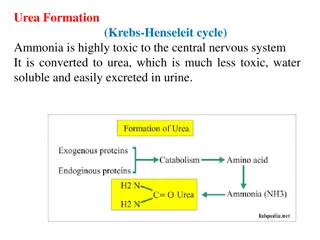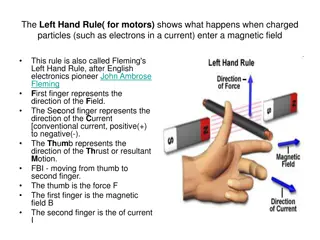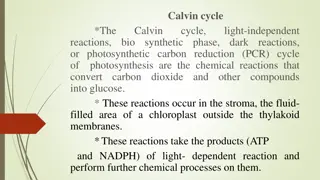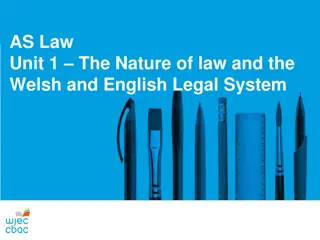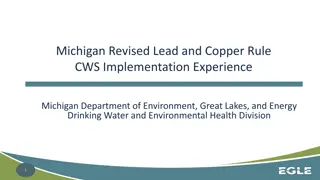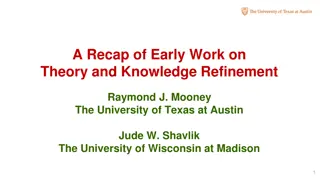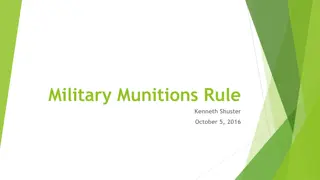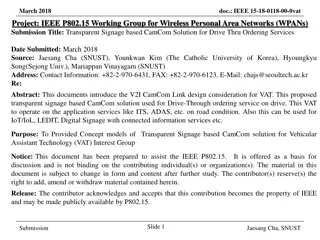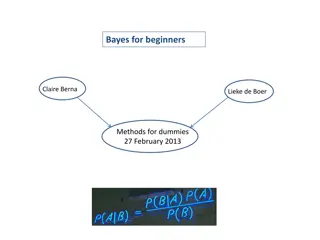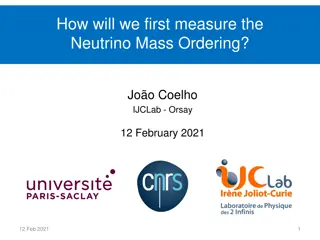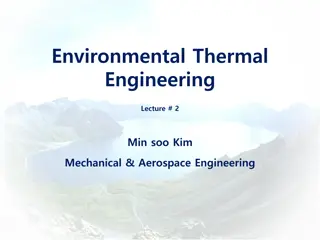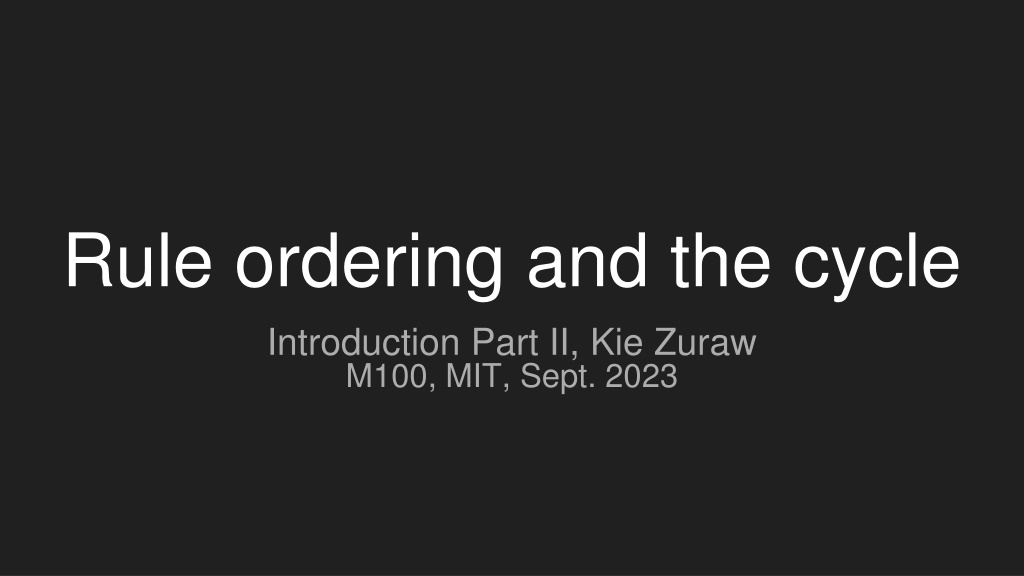
Understanding Rule Ordering and Interactions in Linguistics
Explore the concepts of rule ordering, cycles, and interactions within linguistic processes, including capturing how processes interact, the freedom in rule ordering, enforcing similarity between related words, and the relationship between morphology and phonology.
Download Presentation

Please find below an Image/Link to download the presentation.
The content on the website is provided AS IS for your information and personal use only. It may not be sold, licensed, or shared on other websites without obtaining consent from the author. If you encounter any issues during the download, it is possible that the publisher has removed the file from their server.
You are allowed to download the files provided on this website for personal or commercial use, subject to the condition that they are used lawfully. All files are the property of their respective owners.
The content on the website is provided AS IS for your information and personal use only. It may not be sold, licensed, or shared on other websites without obtaining consent from the author.
E N D
Presentation Transcript
Rule ordering and the cycle Introduction Part II, Kie Zuraw M100, MIT, Sept. 2023
What are rule ordering and the cycle for? Capturing how processes interact panibo panbo pambo deletion feeds assimilation panibo (no assimilation possible) panbo assimilation counterfed by deletion Enforcing similarity between related words ap logy ap log tic vs. expected initial secondary stress: * polog tic, cf. r domont de Capturing level -type differences p rent - par nt-al adding -al pulls stress rightward p rent - p rent-ing adding -ing leaves stress where it was
How free is rule ordering? (capturing how processes interact) Can rules be ordered within a level? (Milenkovi ) How are stress rules ordered with respect to segmental rules? (Rusyanov & Rasin) When must ordering be disjunctive? (Bakovi & Blumenfeld) Are some rule orders unstable? (Davis & Flego) Are two small, ordered rules really simpler than one big rule? (Nelson) If we combine two small rules into one big rule, can we still distinguish ordering types (feeding, counterfeeding, etc.), and should we want to?
How much do morphology and phonology see each other? (partly: enforcing similarity among related words) In DM, should there be morpho-phonological rules? (Benz) When can morphological and phonological structure differ? (van der Hulst) Is there an inventory of paradigm types that phonology can refer to? (Rebrus, Szigetv ri & T rkenczy)
Can we streamline the way we deal with a rules domain of application? ( level -type differences) Boundary types, levels, prosodic domains, phases they do a lot of the same work If we have phases, do we need classical cyclicity? (Newell) If we have phases, do we need prosodic domains? (Newell)
Capturing how processes interact How free is rule ordering? Enforcing similarity between words How much do morphology and phonology see each other? Enforcing level -type differences Can we streamline the way we deal with a rule s domain of application? To a non-phonologist, or non-linguist cognitive scientist who happened into the room, these might seem like narrow concerns But they re not: they re specific cases of broad-ranging questions about cognition Let me try to bring some of these questions to mind before you visit the posters (in a very general way, without getting into the literature, in phonology or in cognitive science, that has explored these ideas)
Linked representations How are mental representations implemented Which mental representations are linked, how strongly, and why? Word representations are naturally linked via shared form and meaning https://commons.wikimedia.org/wiki/File:Cat_Domestic_(2015;_cropped_2023).jpg
Linked representations Paradigms But is that all there is? Or are there also structured relationships, with structures that must be learned (as opposed to emergent)? singular plural nominative rosa rosae genitive rosae rosarum dative rosae rosis accusative rosam rosas ablative rosa rosis It s not just to what degree are word representations themselves symbolic vs. gradient But also to what degree are relationships among word representations symbolic vs. gradient?
Ordering in cognitive algorithms Information-dependent ordering Maybe you ve participated in a math relay race You can t complete your task until you get ANSWER from the person in front of you (You can often get started, though: possibility for cascading ordering)
Ordering in algorithms How free is rule ordering Some ordering in cognitive algorithms is necessary because of information dependencies Catching a ball: ascertain trajectory position hands You have to know the ball s trajectory before you can plan (or finish planning) where to put your hands [There is a huge literature on sports cognition and I m not well-versed in it, so my specific examples could be wrong!] Examples in phonology Before a rule targeting stressed syllables can apply, some stress has to be assigned stress rules stress-dependent rules You have to know the phonological content of the morphemes you re dealing with before you can apply phonology to them some morphology some phonology https://commons.wikimedia.org/wiki/File:Catching_a_utility_ball_in_a_dodgeball_match.jpg
Ordering in algorithms How free is rule ordering Some ordering is necessary in light of a goal Serving a tennis ball toss ball in air swing racket goal: hit the ball over net so the ball has to be in the air when you swing so you have to toss the ball in the air before swinging the racket You could imagine the reverse order swing toss perhaps in a dance performance that lacks the hit-over-the-net goal but hard to imagine a sport with this order Phonology example: If the goal is to avoid place-mismatched sequences like np delete potentially intervening material place-assimilate Does phonology have goals ( constraints)? https://commons.wikimedia.org/wiki/File:Team_Netherlands_in_wheelchair_tennis,_serve_(37300128011).jpg
Ordering in algorithms How free is rule ordering Can ordering be arbitrary (must be learned)? In baseball hit ball run assuming that hitting and starting to run for first base form a coordinated program Ordering derives from arbitrary rules of the game There could be an imaginary sport where you come running from third base to hit the ball at home plate run hit ball Example in phonology: Dialect A vs. Dialect B in raising and tapping / a t+ / t (counterbleeding) / a t+ / a (bleeding) https://commons.wikimedia.org/wiki/File:Brown_Batter_Philly_art.JPG
Window of computation domain of application How far into the past and future do you look? What is your buffer size Wayne Gretzky, supposedly: I skate to where the puck is going to be Phonology examples How far can the English rhythm rule go? What affects window size? Imagine a car dealership M nnes ta nt que J pan se m torc rs M nnes ta nt que J pan se m torc rs M nnes ta nt que J pan se m torc rs M nnes ta nt que J pan se m torc rs (I know I said I wouldn t cite literature here, but see Tilsen 2012, Utterance preparation and stress clash ) After a phase domain has been sent to transfer, which computations do we close the book on? More generally, do domain boundaries of some kind help keep computation under control? and if that s their function, does it make predictions? https://www.gettyimages.com/detail/news-photo/wayne-gretzky-of-the-edmonton-oilers-skates-on-the-ice-news- photo/52067308#/wayne-gretzky-of-the-edmonton-oilers-skates-on-the-ice-during-an-nhl-picture-id52067308
Look-up vs. computation Not directly addressed in this session, but lurking in proposals about Level 1/stem level Chess (soccer, etc.) players gain advantage from chunking recognizing recurring configurations rather than calculating their implications afresh If phonology and morphology of earlier levels are more likely to be stored, and later levels more likely to be computed (as most think they are) How much does that explain why buffer size, opacity, existence of exceptions, etc. work differently in different levels? Does that view make additional predictions about the differences between levels? http://billwall.phpwebhosting.com/articles/chunking.htm
Its time to visit the posters If you want, you can think about Theoretical purpose of rules & cyclicity Broader issue in cognition Question in today s posters Capturing how processes interact How free is rule ordering? Ordering in algorithms: information-dependent, goal- dependent, and arbitrary Enforcing similarity between words; paradigms How much do morphology and phonology see each other? Linked representations: emergent vs. structured Enforcing level -type differences Can we streamline the way we deal with a rule s domain of application? Window of computation Lookup vs. computation
Themes for discussion 1. Can we streamline the way we deal with a rule s domain of application? Window of computation Lookup vs. computation Boundary types, levels, prosodic domains, phases they do a lot of the same work If we have phases, do we need classical cyclicity? (Newell) If we have phases, do we need prosodic domains? (Newell)
Themes for discussion 2. How free is rule ordering? Ordering in algorithms: information-dependent, goal- dependent, and arbitrary Can rules be ordered within a level? (Milenkovi ) How are stress rules ordered with respect to segmental rules? (Rusyanov & Rasin) When must ordering be disjunctive? (Bakovi & Blumenfeld) Are some rule orders unstable? (Davis & Flego) Are two small, ordered rules really simpler than one big rule? (Nelson) If we combine two small rules into one big rule, can we still distinguish ordering types (feeding, counterfeeding, etc.), and should we want to
Themes for discussion 3. How (much) do morphology and phonology see each other? Linked representations: emergent vs. structured In DM, should there be morpho-phonological rules? (Benz) When can morphological and phonological structure differ? (van der Hulst) Is there an inventory of paradigm types that phonology can refer to? (Rebrus, Szigetv ri & T rkenczy)



